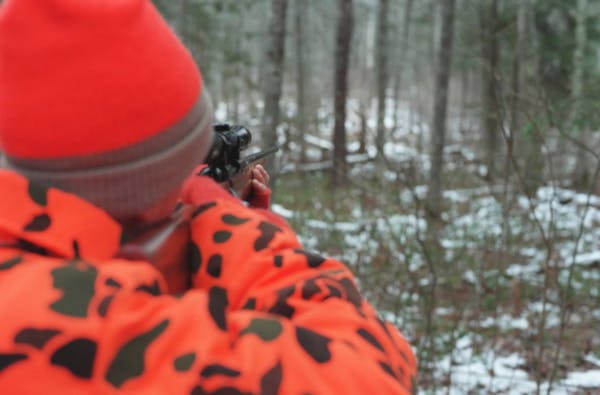The top executive of Anoka-based Federal Ammunition said Friday that Minnesota is attacking one of America's most successful conservation programs by banning the use of lead ammo, beginning this fall, in 56 Scientific and Natural Areas (SNAs) open to hunters.
The ban also affects special hunts in some state parks.
The recent directive by Department of Natural Resources Commissioner Sarah Strommen only pertains to 0.45% of all DNR-managed acres that allow hunting, but Federal president Jason Vanderbrink said the move astonished him, especially because it was ordered without input from the Legislature, citizens or the company.
"It's a foot in the door to a possible broader ban and we don't like that,'' Vanderbrink said in an interview with the Star Tribune.
He said a shift from lead to alternative nontoxic materials such as copper, tungsten and bismuth would raise manufacturing costs and hurt overall ammunition sales, thus lowering the collection of related federal excise taxes. The tax receipts pour billions of dollars into the historic and national wildlife restoration fund known as Pittman-Robertson Act. The DNR regularly receives millions of dollars a year from that pool of money.
"All of this hurts conservation, it doesn't help,'' Vanderbrink said. "Hunters and shooters are the biggest conservationists in the world.''
At Vanderbrink's request, the DNR has agreed to sit down with the company to discuss the issue. In a July 13 letter from Strommen to Vanderbrink, the commissioner welcomed such a meeting but did not back down from the decision she made in late June.
"We are more than confident that our decision to limit hunters to nontoxic ammunition on SNAs is reasonable, consistent with the purpose of the SNAs, and based on sound science,'' the commissioner wrote.
Her order cited studies that lead is toxic to wildlife.
Vanderbrink said the commissioner's order was unexpected. He wrote to Strommen on July 10, complaining that such a move should not have been undertaken in isolation.
"The order will affect thousands of hunters who pursue game … and greatly harms one of Minnesota's economic engines: the firearms and ammunition industries,'' he wrote. "Minnesota DNR policy should focus on maintaining and growing hunting opportunities for all, not catering to the opinions of the extremes.''
Vanderbrink is president and chief executive officer of sporting products for Vista Outdoor, a world leader in ammunition design and manufacturing. Federal, a major cornerstone of the business, has long operated a manufacturing plant in Anoka and employs 1,500 Minnesotans.
He said lead ammunition prohibitions like those in California and other western states overlook that the traditional raw material for shotgun and rifle ammo spares the world from more mining. The "vast, vast majority'' of lead ammunition made by Federal comes from lead recovered in Minnesota from used car batteries, Vanderbrink said.
He also said the DNR's recent limited ban against lead ammunition is a contradiction. The agency cites studies of bald eagles and other raptors being poisoned after feeding on gut piles from deer shot by hunters using lead ammunition. At the same time, Vanderbrink said, DNR touts on its own website the conservation success of eagles exceeding their overall recovery goal, continuing to grow by more than 30 nesting pairs per year in Minnesota.
In Strommen's letter to Vanderbrink, the commissioner clarified that her SNA decision was not based on "wildlife population harm.'' Rather, she wrote, the use of lead ammo within the properties undermines the "exceptional scientific and educational values for which these lands were designated.'' She said DNR's job is to "perpetuate and protect from unnatural influences the scientific and educational resources within them.''
The commissioner noted in her letter that the agency is on record agreeing with Federal's position that broad lead ammunition and lead fishing tackle bans are in the purview of the Legislature. But Vanderbrink said the SNA decision makes him skeptical.
"In Minnesota, the trend is not good as we see it,'' he said.

